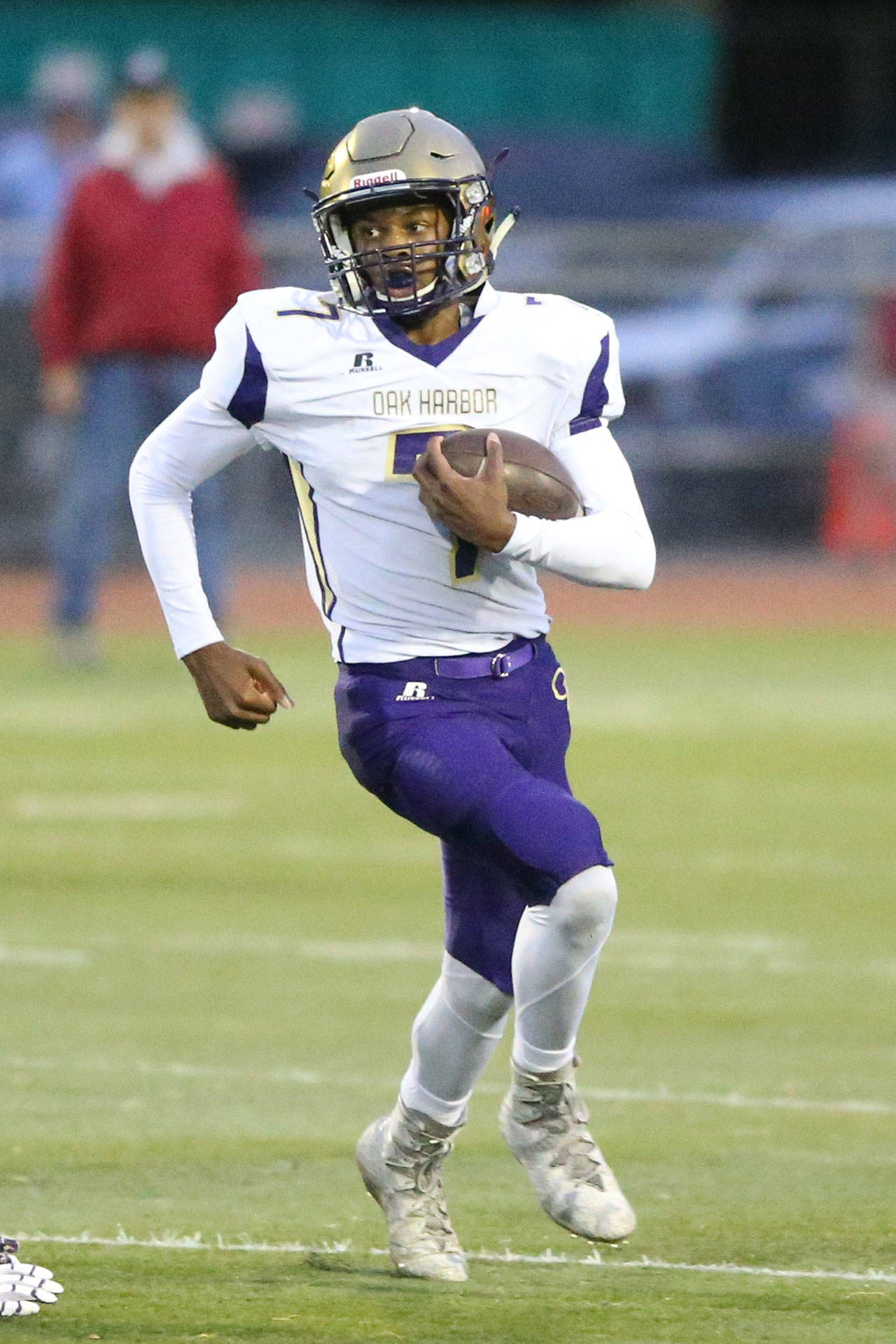“To get bigger, faster, stronger.”
Oak Harbor High School rising seniors Jeff Gordon and Dorian Hardin used the same words to describe why they take part in the school’s summer conditioning program.
Oak Harbor High School joins forces with IRG Physical Therapy to provide the off-season program, and Corbin Ferry is the company representative assigned to lead the Wildcat athletes.
Ferry agrees with Gordon and Hardin’s assessment of the program, but said increasing the efficiency and effectiveness of the athletes’ movements for their respective sports is secondary.
“As a strength and conditioning coach, my first and foremost goal is to reduce injuries,” Ferry said. “We are in a great position to positively affect our students’ athletic experience by maximizing their ability to play. If athletes are injured, it does not matter how proficient they are at their respective sport. They cannot participate if they are injured.”
Ferry, a graduate of Marysville-Pilchuck High School, has been a strength and conditioning coach since 2015 and has worked at Mariner and Kamiak high schools as well as his alma mater and SnoKing Hockey.
In addition, Ferry coaches through IRG’s private program, helping athletes ranging from 8-year-old figure skaters to those preparing to go play college football.
Ferry will leave this month to finish his degree at St. Martin’s University, where he competes on the track team.
Oak Harbor High School’s summer program attracts about 60 athletes a day divided into three sessions. The first session, 9-11 a.m., is for football players. The other sessions, 11 a.m. to noon and noon to 1 p.m., are for what Ferry labels Olympic sports.
“All kids want structure,” Ferry said, which the conditioning program offers, and the athletes “take accountability in that.”
On the white board in the OHHS weight room, Ferry has scrolled “Good teams are coached by coaches, but great teams are coached by athletes.”
Ferry wants the athletes to take ownership in their conditioning and lead by example.
Gordon accepts that role.
“We bring the freshmen in and get them involved in the program,” he said. “That is a key component.”
Working out together builds team camaraderie, Gordon added.
“It allows us to get excited about working out,” he said, and the players are motivated seeing each other “flying around and moving weights.”
Hardin echoed those comments, noting it is more than individuals improving themselves.
“This helps the team succeed,” he said. “When we are all here, we are getting stronger and building team chemistry.
“We all push and support each other in the weight room. It gets the adrenaline going, and we push each other here more than anywhere else.”
Rising junior Nate Nunez said the program helps him get in shape and learn proper training technique.
He, like Gordon and Hardin, sees beyond the individual growth.
“This is a way for me to achieve my own goal while helping the team get better. We can all come together as a team.”
Ferry acknowledges that conditioning can be become dreary and monotonous, so he interjects competitions every Wednesday to keep the kids engaged.
Some of the those activities, like a spelling bee or egg toss, have little to do with sports but keep the mood light.
They also allow the younger athletes a chance to shine.
The more mature kids generally stand out in the weight room and on the athletic field, so the Wednesday competitions allow “a sophomore who may not get any recognition for a few years the opportunity to score some points,” Ferry said.



